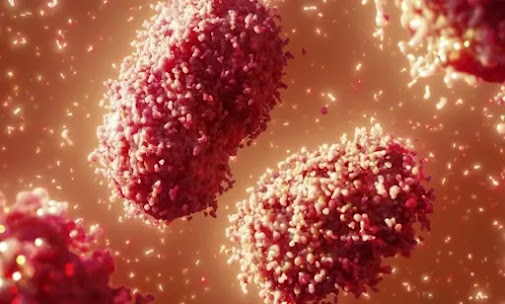What is monkeypox? How does it spread?
Health authorities around the world are monitoring the potential for further outbreaks, especially among young people, but at the same time confirm that "the risk to the general public remains low."
Monkeypox symptoms and treatment
Monkeypox belongs to the same viral family as smallpox but causes milder symptoms. Most patients suffer from fever, body aches, chills, and malaise. In more severe cases, rashes and blisters can form on the face and hands and spread to other body parts.
The incubation period (time from infection to symptoms) of the viruses that cause these infections is about 5 days to 3 weeks, and most people recover within 2 to 4 weeks without the need for hospitalization, but Monkey Panula One in ten people who can contract can die and is considered to be more severe for children, pregnant women, and people with a weakened immune system.
The infection phase is divided into two periods.
Infiltration duration:
varies from infection to up to 5 days, with the most prominent features being fever, severe headache, swollen lymph nodes, back and muscle pain, and severe weakness.
The onset of rash:
Occurs 13 days after infection, one of the most prominent features is the appearance of a rash. It usually starts on the face and spreads to other body parts. The rash is most pronounced on the face (95% of cases) and palms and soles (75%). The rash progresses from flat spots to small fluid-filled blisters, pustules, and the next stage of development in about 10 days, and can take up to 3 weeks for the rash to disappear completely.
Before the rash appears, some patients may have large lymph nodes. This is a characteristic of monkeypox that sets it apart from other similar illnesses.
People exposed to the virus are often given one of several smallpox vaccines that have also been effective against monkeypox, and antiviral drugs have also been developed.
On Thursday, the European Center for Disease Control and Prevention recommended quarantining all suspicious cases and introducing the smallpox vaccine to high-risk contacts.
Disease and viral nature
Monkeypox is a rare zoonotic disease that occurs in wild animals such as rodents and primates and can be transmitted from animals to humans. The first known human infection was discovered in 1970 in a remote 9yearold boy in Congo.
Smallpox has been eradicated since 1980, but monkeypox still occurs sporadically in parts of the African continent. The virus was first discovered in 1958 at the Serra State Institute in Copenhagen, Denmark, during a study of smallpox disease in monkeys.
Since then, researchers have been working on the name (monkeypox). In the fall of 2003, a confirmed case of monkeypox was reported in the United States. This is the first case of the disease reported outside the African continent, "most of the infected seem to have been in close contact with native prairie dogs."
In 2005, an outbreak of monkeypox in Unity in Sudan reported sporadic cases in other parts of the African continent, from the Democratic Republic of the Congo to the Republic of the Congo, with an additional 26 cases and two deaths. .. happened. Central African Republic from August to October 2016.
What is the difference this time? This is the first time that smallpox has spread to people who have never traveled to Africa, most commonly men who have had sex with men.
In Europe, outbreaks have been reported in the United Kingdom, Italy, Portugal, Spain, and Sweden, and on Wednesday US officials reported cases of a man who recently traveled to Canada.
Canadian health officials have confirmed two cases, and Quebec health officials have previously stated that they suspect 17 cases in the Montreal region. Top European health officials warned on Friday that the number of rare virus cases could increase in the coming months.
Hans Kluge, WHO Director of Europe, said: "I'm worried that the infection will accelerate. The infection may have continued for some time, and cases have spread geographically to Europe and other countries.
Is Smallpox Infected Through Sexual Contact?
The sexual spread of smallpox is possible but not yet entirely clear; it can be transmitted through close contact with infected individuals, through the exchange of bodily fluids and clothing, or through rubbing against the individual sheets that hold them together, and Kluge warned that transmission could be facilitated by the fact that "the cases currently detected are in sexually active individuals.
" He explained that most of the early detected cases involve men who have had sex with other men and sought treatment at sexual health clinics.
For its part, the World Health Organization (WHO) said it is investigating whether any of the reported cases are gay, bisexual, or MSM.
Michael Skinner, a virologist at Imperial College London, said in a press release, "Sexual activity is inherently associated with intimate contact, which increases the risk of transmission regardless of sexual orientation.
François Balloux of University College London points out that sex is a necessary form of intimate contact to transmit the disease, but stresses that the U.K.
Reducing the severity of the disease
Since there is no specific treatment or vaccine for the disease, the only way to reduce the incidence of infection is to increase awareness of associated risk factors and take steps to reduce exposure. There are two points on which disease education should focus:
First, avoid intimate physical contact with infected persons, use gloves when treating patients, and frequent hand washing.
Second, there is less risk of viral transmission from carrier animals to humans, and all animal products must be completely cooked before consumption.



.webp)
Post a Comment